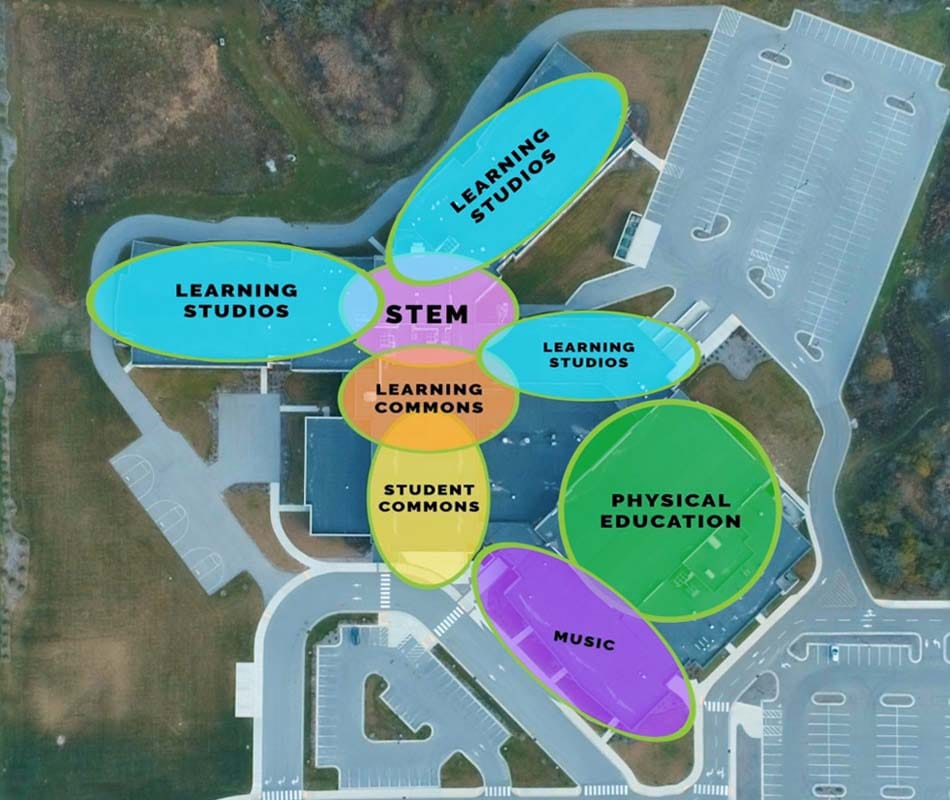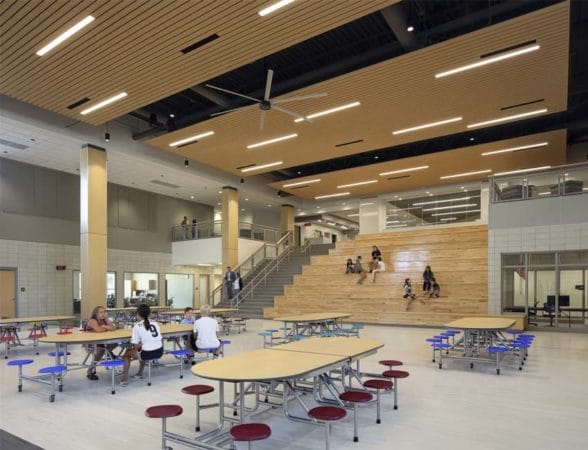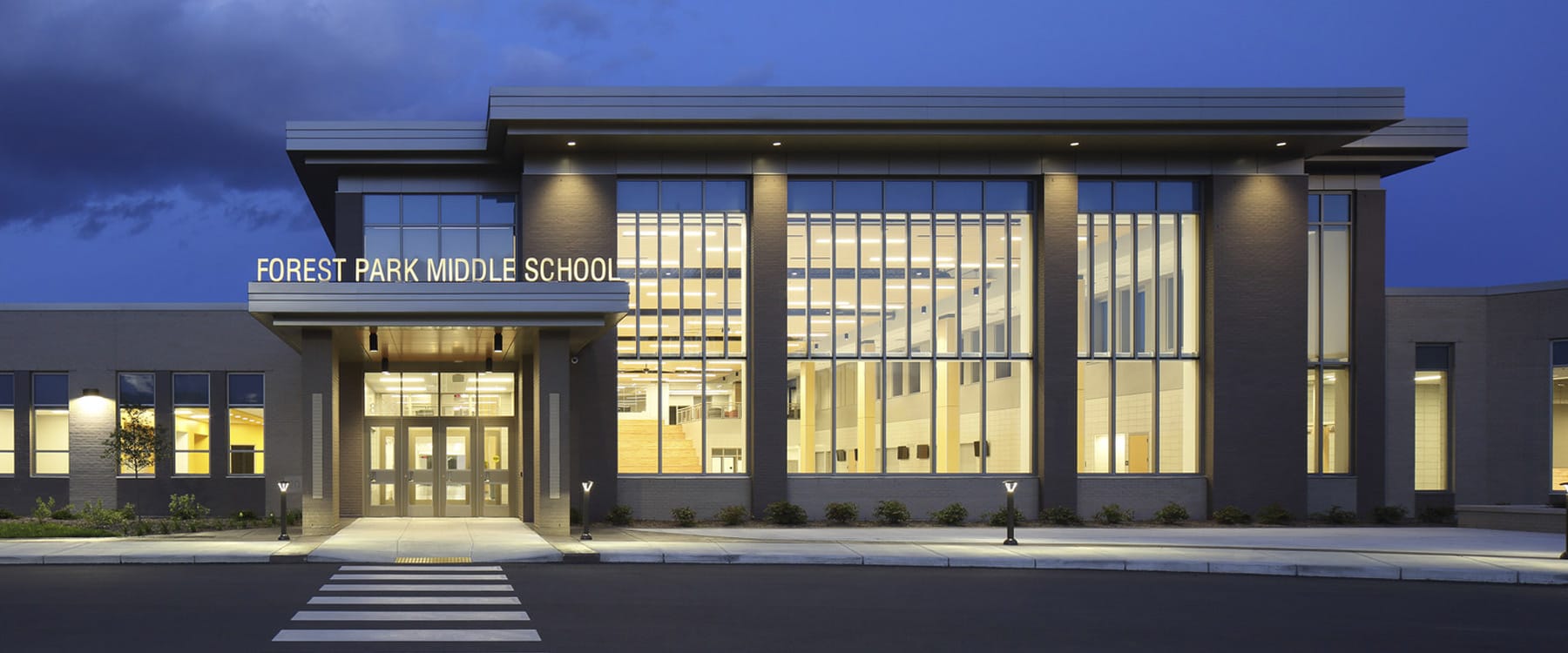Where School Design Meets Curriculum
Traditional school design lacks the flexibility needed for today’s curriculum and often limits student exposure to opportunities outside of core subjects. In the past two decades, our perspective on school design has evolved to be more student-centered and promote collaboration and more personalized learning opportunities. School buildings are no longer simple places we send our children to receive direct instruction for nine months of the year. Instead, they are tools used to enhance learning and provide access to discovery.
Forest Park Middle School in Franklin, Wisconsin was envisioned from the start to reinforce curriculum and expose students to new opportunities. The evolution of the district curriculum began at the high school level by integrating an array of STEM programming to encourage students to engage with hands-on multidisciplinary learning. The district wished to prepare students for success in these new high school programs and chose to replace an existing middle school with a new 209,000 sq. ft. school building designed to reinforce self-discovery, project-based learning, and passively expose the entire student body to opportunities with STEAM.
Visit the school through this video tour and read more information below to discover for yourself how Forest Park Middle School promotes the new curriculum and provides opportunities for the community’s students.
Organizing Factor: The STEM Discovery Center
Tomorrow’s workforce will benefit from a familiarity with STEM concepts. Forest Park Middle School is designed to engage sixth through eighth graders in a new curriculum that prepares them for high school and future careers. In addition, it seeks to build interest in exploring a variety of careers by highlighting alternative learning activities offered in engaging and welcoming spaces.
Exploration and hands-on learning. To achieve these goals, the school is organized around a STEM Discovery Center that spans two floors. The center incorporates the Learning Commons (Library) and is at the heart of the school’s circulation pattern. Strategically placed activities within the spaces are visible to passing students through large areas of glass.
The Discovery Center houses:
- Fabrication Lab
- Prototyping Lab
- Electronics and Robotics Lab
- Open Research-Based Media Center

What is unique about the STEM Discovery Center is how it promotes observational learning. A sixth grader could walk past a classroom and see friends at work on an interesting project or with impressive-looking machinery. This passive but intentional exposure plants a seed of interest or sparks excitement of the possibility of what they could create themselves.
The Learning Wings
The learning wings extend from the STEM Discovery Center and contain the majority of the school’s core learning studio spaces. Each wing is identified with a different color to help establish individual learning neighborhoods. Within these neighborhoods are break-out spaces that allow for small-group collaboration or more focused learning. Strategically organized to facilitate multidisciplinary learning and provide direct access to the building’s core, each wing reduces the larger scale of Forest Park Middle School to become more intimate neighborhoods, easing student’s transition from elementary school.

The Student Commons
The student commons is an expansive and multipurpose space that gathers students at the start and end of each day. It provides the cafeteria space, and space for large-group gatherings, and includes a variety of seating and technology to support individual or group work or large group presentations.
The space provides access to Administration, the music and gymnasium cores, and connects to the central circulation. A learning stair leads to the Learning Commons and the upper level of the STEM Discovery Center and provides space for socializing or group activities.
One School’s Impact
Forest Park Middle School will change the way students learn and interact with new ideas. The school building integrates ways for students to collaborate and learn from one another, from digital display technologies to physical prototyping, from writing on whiteboards to writing on window glass, from working solo in a focus room to solving problems together in a neighborhood break-out space. Each space holds a learning opportunity.

